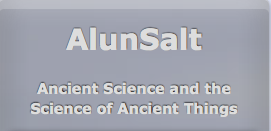For this assignment, I viewed a number of archaeology blogs to understand the goals of blogging archaeology and how these authors reach out to their audience. Overall, I found that the most effective and engaging blogs were the ones that were the most personal. For me, the blogs that discussed the author’s opinions about archaeology and their own research projects were the most exciting. Two blogs that definitely captured my interest were Terry Peterkin Brock’s blog, “Dirt,” and Mick Morrison’s blog, “Mick Morrison: Archaeology and Heritage in Australia.”
Mick Morrison is a professor at Flinders University in Adelaide. He is an archaeologist with a background in cultural heritage management, focused largely in northeast Australia. Morrison began his blog in 2009 hoping to encourage a greater representation of Australian Archaeologist bloggers on the internet. He only posts about fifteen to twenty times a year, but his updates are interesting and diverse, ranging from discussing his experiences in the field to writing grant proposals. His posts are generally comprised of text along with images that work together to make the piece complete. Morrison allows his audience a window into his life as an archaeologist in Australia through his blog. I also really appreciate Morrison’s eagerness to engage with his audience to have an open dialogue about archaeology.
Terry Peterkin Brock is a PhD candidate in Anthropology at Michigan State University. He is interested in historical archaeology especially in Historic St. Mary’s City, Maryland. His blog serves as a space for him to discuss and write about a number of topics that interest him related to archaeology ranging from the inclusion of his dissertation project on slavery to issues relating to gender violence and sexual assault prevention. Brock often discusses the use of blogging and multimedia in relation to archaeology, which I found very interesting. He not only discusses his own personal experiences with blogging and Twitter but also brings the opinions of others into his posts. Using links within his posts to other articles allows for the audience to look up a topic that Brock mentioned but did not fully explain, giving the reader an opportunity to really get a handle of the discussion at hand. Brock’s use of other multimedia, internet resources, and images, adds to the accessibility and depth of his posts and site overall. His posts are also very interesting as he often points out how archaeology is relevant to a number of current events. Discussing the changes in the internet realm with Twitter, blogging, etc… also gives that audience the opportunity to see how Brock is adapting to these changes to continue and improve his discussions of archaeology. One of my favorite posts was about advice about digging during the winter time. He gives advice about what clothes to wear and how to stay warm. My favorite advice for digging in the cold: Grow a beard. “For those of you genetically pre-determined to be able to grow facial hair, get on it.” He adds humor to his page and gives it a personal feel while still maintaining his goals of creating an accessible space to learn about and discuss archaeology.


 Bones Don’t Lie: News and Commentary on Bioarchaeology and Mortuary Archaeology
Bones Don’t Lie: News and Commentary on Bioarchaeology and Mortuary Archaeology